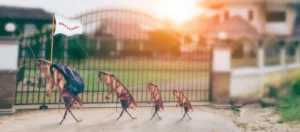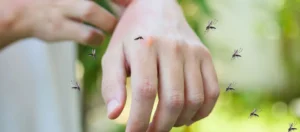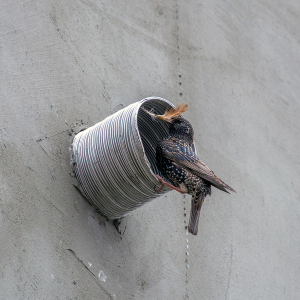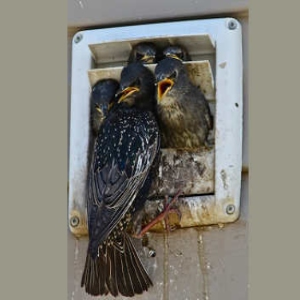Birds, particularly species like starlings and pigeons, are a common source of nuisance for homeowners in Toronto and the Greater Toronto Area (GTA). These birds can wreak havoc on the exterior of properties, leaving behind a considerable mess with their droppings.
The accumulation of bird droppings on facades, windows, and roofs can give the appearance of being painted over, resulting in unsightly stains that detract from the aesthetic appeal of the property. Additionally, the acidic nature of bird droppings can cause damage to building materials over time, leading to deterioration and potential structural issues.
Starlings, in particular, are known for their nesting habits and tendency to shed feathers, which can pose additional challenges. Nesting materials and feathers can accumulate in gutters, blocking the flow of water and causing water damage to the property’s exterior and interior.
Beyond the aesthetic and structural concerns, bird droppings also present health hazards. They contain dangerous pathogens that can pose risks to human health upon contact or inhalation. Moreover, the odor emitted by bird droppings can be unpleasant and pervasive, further detracting from the quality of life for residents or visitors.
Several factors can attract birds to a home or business premises:
- Convenient resting and nesting spots: Birds are attracted to properties that provide suitable locations for resting and nesting. This includes gaps in attics, under-roof spaces, and other sheltered areas where they can build nests and raise their young.
- Food sources: Nearby trees with seeds, pet food left outdoors, and food scraps can attract birds to a property. The availability of food makes the area more appealing for foraging and feeding.
- Shelter: Birds seek shelter from the elements, and properties with accessible gaps or openings provide refuge from adverse weather conditions.
- Water: Standing water, such as puddles or stagnant pools, offers birds the opportunity for drinking and bathing, further incentivizing their presence on the property.
To address bird infestations in a humane manner, it’s essential to employ effective bird control methods. These methods should deter birds from roosting and nesting on the property without causing harm to the birds themselves. Solutions may include bird deterrents such as netting, spikes, or visual deterrents, as well as habitat modification to eliminate attractive nesting sites.






